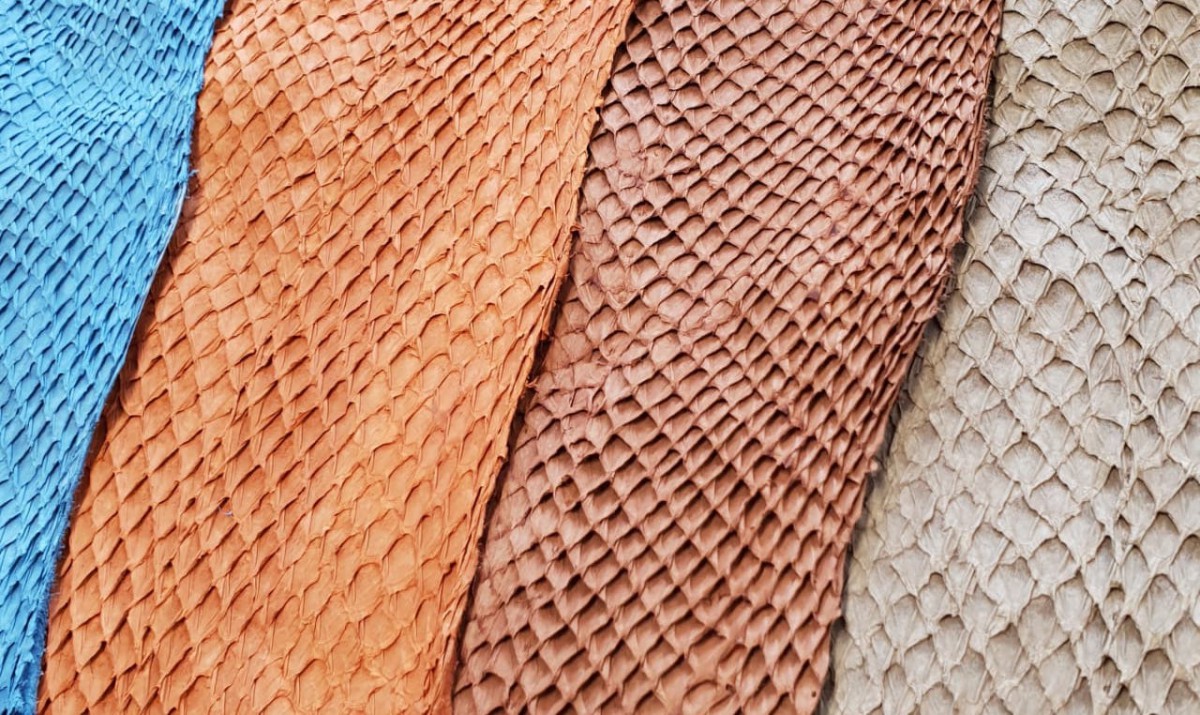Glamorous sustainability
Discussions around sustainability can be fairly reductive, it is time to broaden the dialogue and introduce glamour…
As silly as it may sound, discussions around sustainability can be fairly reductive. The yachting industry, for instance, likes to quite understandably focus on propulsion and plastics given that they are two of the industry’s most pervading issues. However, perhaps it is time for more stakeholders to start thinking about sustainability in a far broader sense. Sometimes even the most seemingly innocuous luxury items can have a fascinating and sustainable story. Sustainable stories should be everywhere, not just saved for the big-ticket items.
“Our speciality has been sustainable luxury architecture and design for a long time. The first time I used the term sustainability seriously in a business context was in 2005 when it wasn’t being used by anyone,” starts Milena Cvijanovich, founder of Milena C Designs and co-founder of Nomadessence. “The idea first came about from all the travelling around the world I was doing for our high-end clients. What we found during our travels were so many amazing materials and crafts that were being lost because local communities felt that they were better off aspiring towards jobs in the city.”
 Atlantic Leather, Fishskin leather made from fishing industry byproduct
Atlantic Leather, Fishskin leather made from fishing industry byproduct
At the time, protecting traditional craftsmanship and leading local communities towards prosperity through the protection of crafts and materials was not necessarily viewed as being sustainable. Nevertheless, Cvijanovich sort to create a platform (Nomadessence) where she could bring awareness of these crafts and materials into the world of luxury design, including residential, superyacht and high-end hospitality projects, amongst others.
“Initially the concept didn’t catch on because luxury clientele at the time saw sustainability as a compromise, whether in terms of their own social status or the literal quality of the materials that were being used. Part of our development, therefore, was about reframing sustainability in terms of luxury. Rather than explaining the sustainable credentials of a particular material or product, we would simply show them at their most glamorous,” continues Cvijanovich. “We completed a sustainable chalet in Switzerland without discussing the term sustainability. We didn’t explain that it was one of the first geothermal heat pumps or that the wood was recuperated, which became a massive thing.
“At the end of the project, I explained to the client the extent to which the project was sustainable and the client didn’t want to hear about it. However, when we had a launch party for the property, I heard him talking proudly about the amount of energy that was saved and that everything was renewable. Sometimes this is how it starts.”
Cvijanovich references businesses like Nature Squared that, under the leadership of Lay Koon Tan, started by providing sustainable materials like fish and frog skin, and recuperated organic matter to luxury projects without their clients understanding the sustainability credentials. Her point is a fairly simple one, being sustainable doesn’t have to only mean being more moral or environmental, it can also mean being glamorous.
 A Nature Squared material made with chicken feathers
A Nature Squared material made with chicken feathers
“I was using Nature Squared’s samples to explain how one can bring sustainable design to a project and yet design with extreme sophistication, and as a result was commissioned to do an interior for a renowned Swiss institution. We won the job by saying ‘look how gorgeous this is’, not ‘look how sustainable it is.' Everyone just thought the space was stunning, it wasn’t until afterwards that I explained that the eggshells that were used came from a landfill and that the chicken feathers had been swept up from a yard,” explains Cvijanovich. “Importantly, however, Tan’s model didn’t just focus on the materials, the chicken feathers and the materials they created supported an entire village of amazingly talented artisans who are now being paid great wages because of Tan. The key is that the product is extremely expensive, which is exactly why the luxury space is the perfect sector for sustainable products.”
According to Cvijanovich, you need to get to luxury prices to make some sustainable products make sense, chiefly because of three key reasons. Firstly, you need to uphold and conserve natural resources, which means knowing where your materials are sourced from or paying for the process of reclamation from landfills and so on. Secondly, the high cost is required to preserve heritage by ensuring older generations continue to teach younger individuals the necessary skills to create certain products to a sufficiently high quality and to reduce the impact of brain drain. In other words, making the work profitable enough to ensure the practice isn’t abandoned. Lastly, it is about social empowerment, ensuring the trade is fair and that those who create the products and/or materials are not exploited.
With the large corporates, such as H&M, Zara or IKEA the prices are simply too low for them to be able to produce high quality and still make a positive difference. The same is not the case in the luxury world. If the quality is high and the availability is sufficiently limited then the pricing can be controlled to match the quality and rarity. In this sense sustainable materials and products are not only ethical and glamorous, they are exclusive and priced to reflect as such.
“Fortunately, people’s opinions have changed over the last three years and the last year especially,” explains Cvijanovich. “People are gravitating towards sustainability now because even major corporations and brands and so on are focussing on ESG. This means that sustainability is now being talked about everywhere. When progress in terms of sustainable acceptance and mainstreaming is considered in line with arious social movements, suddenly you have a much more socially and environmentally aware client base. Clients are far more concerned today about being good to the planet and being good to people.”
It is quite rightly impossible to accept such claims without levying the typically cynical counterarguments. How, for instance, can we know that ultra-wealthy clients are not simply engaging with sustainable practices to help fuel their PR machines and improve their social standings? How do we know that others aren’t engaging with sustainability to have good stories to tell at social events? How can we know who is being sustainable because they genuinely care?
“Considering the perspectives is always important and there are analogous examples that we can draw on from history to help us imagine how sustainable adoption might play out. In the 1960s and 70s, there were quotas for certain businesses to get women into the workplace. Whether or not certain businesses saw the value in hiring women is up for debate, but in the end, the quotas created a balance between the sexes that continued to improve organically,” comments Cvijanovich. “I have noticed that some people might be jumping on the bandwagon so that they can tell the beautiful story behind a particular product. The story of exclusive items can be incredibly seductive. Whether the story helps someone bolster their self-image or allay their guilt is hard to know. However, once people engage with sustainable practices, even if they approach it from a less aware perspective, we have found that there is a natural and continuing buy-in.”
At least part of Cvijanovich’s job is to try and educate stakeholders on the breadth of sustainable choices that are available to clients. There are, of course, the big-ticket items that everyone likes to talk about. Plastic bottles and teak, for instance, will be a mainstay in discussions at least for the foreseeable future. However, Cvijanovich is trying to open people’s eyes to how luxury sustainability can pervade far more than people realise. Everything from textiles and furniture to tableware and fishing rods can be sourced sustainably in a sufficiently luxurious manner, provided people know where to look.
“Our mission is to inspire the world to bring sustainability to glamour and glamour to sustainability,” concludes Cvijanovich.
NEW: Sign up for SuperyachtNewsweek!
Get the latest weekly news, in-depth reports, intelligence, and strategic insights, delivered directly from The Superyacht Group's editors and market analysts.
Stay at the forefront of the superyacht industry with SuperyachtNewsweek
Click here to become part of The Superyacht Group community, and join us in our mission to make this industry accessible to all, and prosperous for the long-term. We are offering access to the superyacht industry’s most comprehensive and longstanding archive of business-critical information, as well as a comprehensive, real-time superyacht fleet database, for just £10 per month, because we are One Industry with One Mission. Sign up here.
NEW: Sign up for
SuperyachtNewsweek!
Get the latest weekly news, in-depth reports, intelligence, and strategic insights, delivered directly from The Superyacht Group's editors and market analysts.
Stay at the forefront of the superyacht industry with SuperyachtNewsweek




